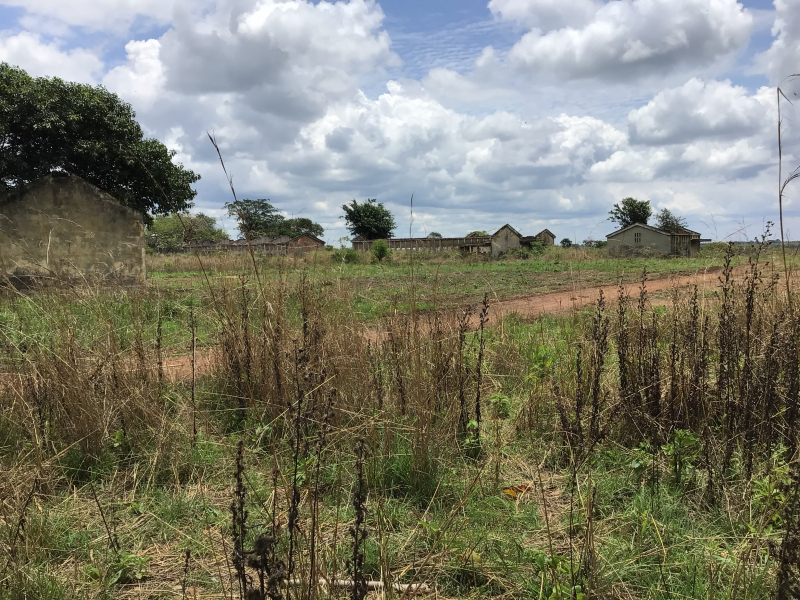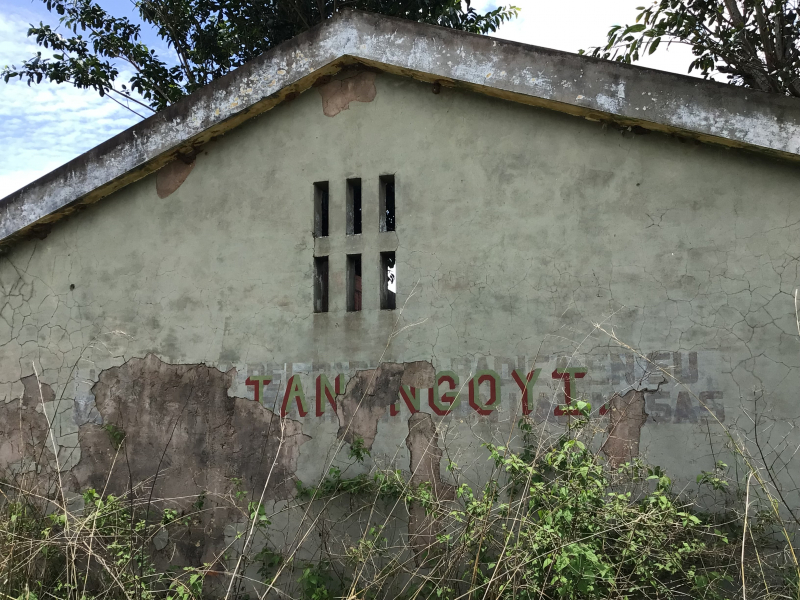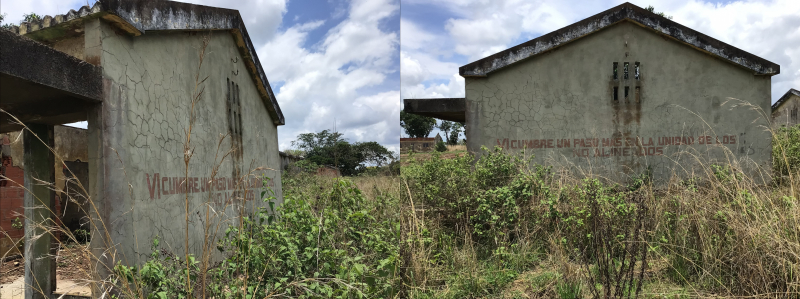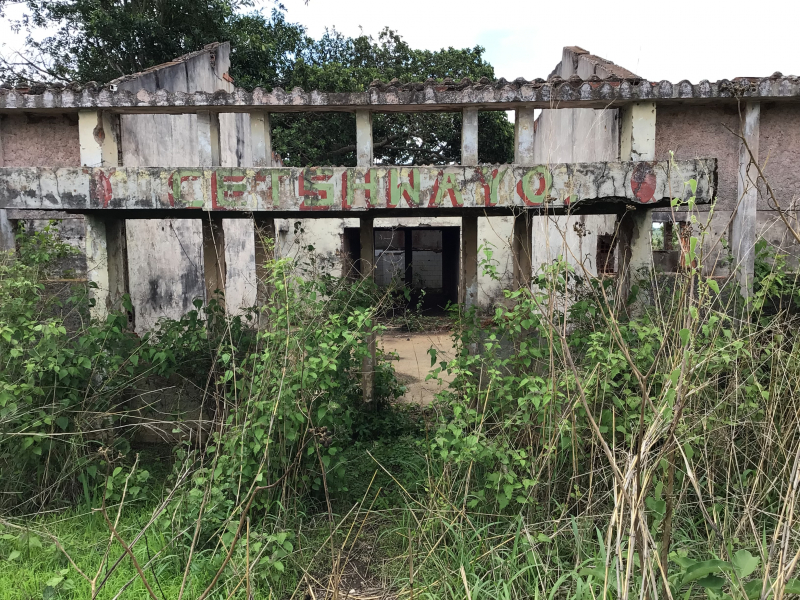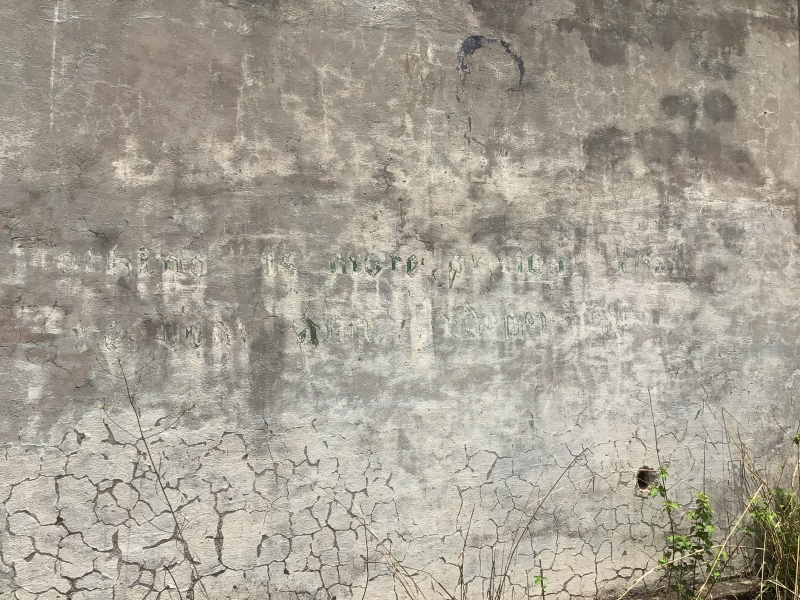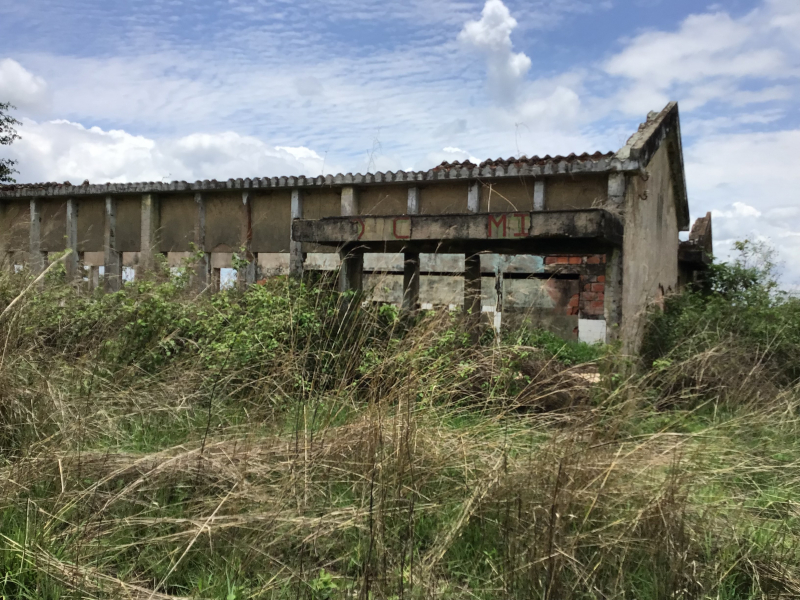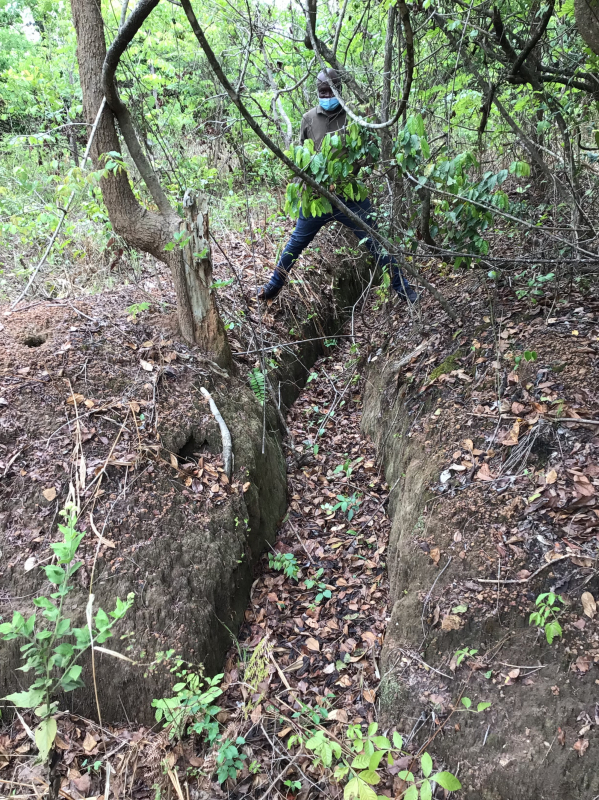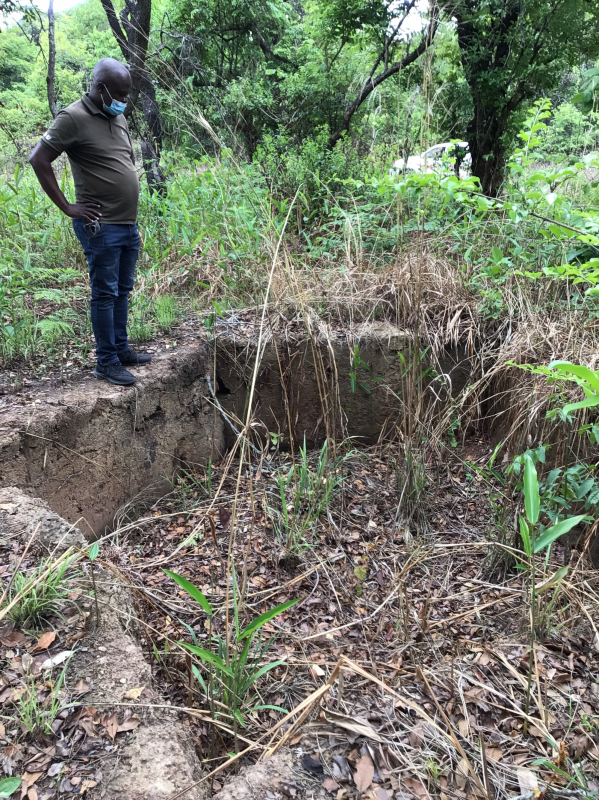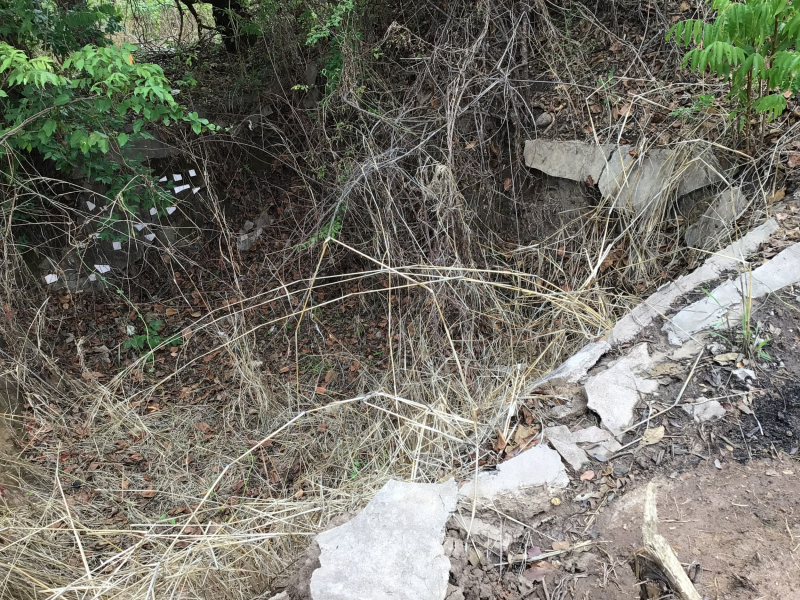I am grateful above all to Rocha Balanga and his friend in the provincial government, without whom I would never have seen the camps. Also to Ronnie Kasrils for his reminiscences, Chloé Buire for the idea for this article, and my colleagues on the Global Soldiers project (https://global-soldiers.web.ox.ac.uk/), Jocelyn Alexander, Arianna Lissoni, JoAnn McGregor and Daria Zelenova. Global Soldiers is funded by the Leverhulme Trust, grant RPG-2019-198.
Data related to this article: “Traces of Solidarity in Liberation Training Sites in Angola: Photographs from Caculama and Camalundu Camps.” 2021. https://nakala.fr/collection/10.34847/nkl.a80e675h
This collection consists of 51 photographs taken in 2021 by the author in the Caculama and Camalundu camps. It is abbreviated as “CC Collection” [Caculama and Camalundu].
It consists of two data sets:
“Caculama Camp (Angola): Photographs.” https://doi.org/10.34847/nkl.03a3s26c. 19 images (CC Collection no. 1 to 19).
“Camalundu Training Centre (Angola): Photographs.” https://doi.org/10.34847/nkl.bac58wy7. 32 images (CC Collection no. 20 to 51).
Caculama location: 9°28’43.3”S 16°51’12.2”E (geo:-9.4787,16.8534)
Camalundu location: 9°10’37.2”S 16°10’13.8”E (geo:-9.17701, 16.1705)
From the mid-1970s until the late 1980s, newly-independent Angola hosted armies that were fighting for the liberation of Zimbabwe, Namibia and South Africa from white rule. Also present in Angola during this period were Cuban and Soviet military officers who helped to train the armed forces of the Angolan state and of the exiled liberation movements, as well as a substantial number of Cuban civilians whose expertise was central to the construction and maintenance of the post-colonial state in Angola: a state which from the moment of independence in 1975 had been fighting a civil war. Since 2020 I have been working on a collaborative project that aims to understand the nature of these connections. Research for this project has relied heavily on interviews with officers, soldiers and civilians who can remember the period, supplemented by published memoirs.
In 2021 I visited two of the sites in Malanje province where liberation armies were trained. Caculama was established in the late 1970s by the Zimbabwe African People’s Union (ZAPU) for its armed wing, the Zimbabwe People’s Revolution Army (ZPRA), and handed over to Umkhonto weSizwe (MK), the army of South Africa’s African National Congress (ANC) when Zimbabwean independence allowed ZAPU soldiers to return home at the beginning of the 1980s. Camalundu was established in colonial times as an agricultural improvement centre, and later used as a training centre by Cuban civilian instructors.1 Both sites are currently unoccupied and unused. Although most of my research in Angola had been concerned with interviewing people, the visit to the two sites was motivated rather by a wish to see what physical legacy had been left by the people of various nationalities who had been there. I had been told there were inscriptions on the walls of the site at Camalundu, but upon arrival I was struck by how many of the surfaces were covered with text that recalled the buildings’ past function. I had a camera with me, but also an iPad whose wide-angle lens was better able to capture the expansive inscriptions. My first thought was to record the inscriptions to assist my own memory, but more importantly for the benefit of those who would not share my good fortune in being able to visit the site. I was also aware that the structures would not last for ever, and as far as I know, no one else has created a photographic record of the site. As this article will show, the photos have also provided an opportunity to look again at the scene, to find unnoticed details, and reflect upon what I saw in the light of subsequent reading and conversations.
Caculama location (on Google Map)
After “Map of transnational connections,” Global Soldiers in the Cold War. University of Oxford. https://global-soldiers.web.ox.ac.uk/research-map.
Camalundu location (on Google Map)
Ibid.
As the study of liberation struggles has shifted away from nation-centred narratives, first to the international perspectives of the “Global Cold War” (Westad 2007) and more recently to a consideration of local struggles and individual motivations in an international context (Alexander, McGregor and Tendi 2017), the camp has received attention as a peculiar environment that nurtured specific kinds of social and political relationships. In his monograph on SWAPO’s training camps, Williams (2015, 11) emphasises the degree of control that liberation movements wield over those who live there. Panzer’s study of FRELIMO in exile has characterised the camp as a place of “contingent sovereignty” in which a host country allows exiled liberation movements to assume some state-like functions of control over their members who are housed there – in this sense, camps are places of “proto state building” where they may seek to enhance their legitimacy in the eyes of those who are accommodated there (Panzer 2013). Alexander and McGregor (2004), writing about ZAPU in exile, portray camps as places that posed a threat to “guerrillas’ sense of agency,” where “they became pawns in the international and internal disputes of their backers and leaders” (80), even if “the period of training was also a time of wonders experienced in foreign countries, and of pride in new military abilities and political sophistication” (88).
In the case of MK in Angola, a proliferation of memoirs by former ANC soldiers and officers recalls the camps both as places of learning and exchange (Kasrils 2004), and of frustration and brutality (Twala and Benard 1994; Dyasop 2021). Several of these works capture the authors’ ambivalent feelings about their political education in the camps in the name of a morally necessary struggle, and the abuse and repression that took place in the name of the same struggle (Ngculu 2009; Manong 2015). As Williams (2011, 11) notes, revelations about the repressive nature of the camps have supported a critical turn in the historiography of the ANC (Trewhela 2009; Ellis 2014). Far from the recollections in some of the memoirs of a Marxist-Leninist internationalism providing inspiration in an arduous struggle, this literature sees the ideological influence of the South African Communist Party as perverting the ANC’s quest for national liberation.
Aside from these considerations specifically of camps, another innovative approach in histories of Third World liberation has been to focus on locations where the participants in liberation struggles and representatives of Third World governments crossed paths (Burton 2019; Mabeko-Tali 2020; Mokhtefi 2018; Roberts 2021). These studies have typically identified crossing points in imperial or revolutionary capitals. The remote rural locations of the camps in Malanje make them less obvious locations for global exchanges of ideas. Nevertheless, the memoirs and reminisces of people who spent time there make clear that the camps were places where South African and Zimbabwean liberation soldiers encountered Cuban instructors on Angolan soil. Even if there is no written record of the conversations that took place here, the photographs of the slogans painted at Camalundu provide evidence of how people who were there conceived of their mission as part of a political struggle that encompassed the globe.
Access to the sites was, as is so often the case, a matter of luck. While in Luanda I caught up with an old friend whose home province is Malanje. When I talked about the research that I was doing, he told me about the training camps which he had heard of from a friend who works for the provincial government in Malanje. In October 2021 this government official took us on a visit to the sites.
Camalundu is accessible in an ordinary car, if you know where to find it. West from Malanje on the main road towards Luanda, a turn-off to head north on the tarred road towards Kota, and from there on dirt roads that have been well maintained to serve the commercial farms that have fenced off the land. Then you arrive at unfenced terrain, an inhabited village of brown adobe houses. Beyond the village, and spaced around an open field, one sees the concrete buildings typical of provincial late colonial Portuguese architecture, painted in faded pastel colours. This architectural heritage is testimony to the site’s origins as part of the strategy of “agricultural improvement” that was employed across Southern Africa in an attempt to legitimate the final wave of colonial settlement after World War II, but more specifically in Angola as part of the changes that were made in response to the anticolonial uprisings of 1961.
Photo 1 (CC Collection no. 48): Camalundu
The camp at Camalundu, known as Hoji-ya-Henda after a hero of the MPLA’s anticolonial struggle, is surrounded by open agricultural land.
Photo by author.
Persistent identifier: https://doi.org/10.34847/nkl.bac58wy7.
Download the image.
Those late colonial attempts at reform did not crush the aspirations for independence that were the basis of mobilisation by three anticolonial movements, the FNLA (National Front for the Liberation of Angola), MPLA (Popular Movement for the Liberation of Angola) and UNITA (National Union for the Total Independence of Angola), each of which emerged from rival regionally based social elites. After the Portuguese revolution of 25 April 1974 heralded an end to colonial rule, mutual mistrust between the three Angolan movements destroyed plans for a transition to independence under a unity government. As independence approached, the conflict attracted the attention of the United States and South Africa, worried about a left-wing government taking power in Angola; it was only the MPLA’s solicitation of Cuban military assistance that stopped a South African invasion, all but destroyed the FNLA’s forces, and forced UNITA to retreat to bush redoubts in southern and eastern Angola.
After the MPLA took control of an independent Angolan state, it was Cuban soldiers who consolidated the government’s control of the interior, and Cuban civilians who provided the human capital that had been lost with the departure of Portuguese functionaries. At Camalundu, Cubans offered training in nursing and agriculture. The site was named Hoji-ya-Henda, the nom de guerre of José Mendes de Carvalho, a young liberation guerrilla who had been killed in combat in 1968 and who has subsequently become a much-remembered icon of the Angolan anticolonial struggle.
Our host had told me there were inscriptions on the walls of some of the buildings in various languages. The first one I noticed was the words “IAN NGOYI” painted in bold capital letters on the wall of a now roofless building. Ngoyi is a South African surname; the Scottish Christian name Ian is not common in the country. It took a moment before I realised that there was a patch of missing plaster to the left of “IAN.” The reference was to Lilian Ngoyi, the nurse and political activist who had been one of the leaders of the Women’s March of 1956 (“The 1956 Women’s March, Pretoria, 9 August” 2011). On 9 August that year, at least 10,000 women marched to the seat of government in Pretoria in protest at the extension of the Pass Laws – the laws that regulated the movement of black people in urban areas – to women. The march is remembered in South Africa as a key moment in popular resistance to apartheid. Since it took place nearly 20 years before Angolan independence, the painting of Ngoyi’s name on the building appeared to be a commemorative act long after the event.
Photo 2 (CC Collection no. 24): Camalundu
Lilian Ngoyi, one of the leaders of the 1956 Women’s March, died in 1980.
Behind the letters that remain of Lilian Ngoyi’s name, fragments of another inscription are visible. “Del pa… radica en su… masas” was enough to show that the language was Spanish, presumably a Cuban legacy. I was not optimistic about working out the rest of the slogan. Months later, I considered asking experts on Cuba if they recognised it, but that wasn’t necessary; simply putting those words into a Google search along with “Cuba” quickly brought up the full slogan: “La fuerza del partido radica en su vinculación estrecha con las masas.” (The party’s strength resides in its strict connection with the masses.) This was the slogan of the Cuban Communist Party congress in 1980.
This building was mirrored by a nearly identical structure on the other side of the open area, bearing the painted slogan: “VI cumbre un paso mas en la unidade de los no-alineaos” (VI [six] completes another step in the unity of the non-aligned). Our host pointed out the reference to the Sixth Congress of the Non-Aligned Movement, which was held in Havana in 1980.
Photo 3 (CC Collection no. 20 & 21): Camalundu
The slogan refers to the Sixth Conference of the Non-Aligned Movement held in Havana: ‘VI [sixth conference] completes another step in the unity of the non-aligned.’
Photo by author.
Persistent identifier: https://doi.org/10.34847/nkl.bac58wy7.
Download image no. 20 & image no. 21.
On another building, on a horizontal concrete beam above what appears to have been the main entrance, the name “Cetshwayo” is clearly visible in red paint, with emblems of a shield and spears on either side. Cetshwayo was the last Zulu monarch before the kingdom’s conquest by the British Empire in 1879. On a similar building, again on the beam above the entrance, the letters “… O C… MI…” suggest that it had at some point been named in honour of Ho Chi Minh. The connection with the Vietnamese revolutionary leader is confirmed by a mural on another building, in which the remaining lines of dark paint are just enough to define an image of his slender and bearded face. Below the iconic portrait a painted text is barely visible. Our host knew the slogan and was able to fill the gaps to work out an English translation of a saying associated with Ho Chi Minh: “Nothing is more precious than freedom and peace.”
Photo 4 (CC Collection no. 34): Camalundu
The name of the Zulu King Cetshwayo, with emblems of a shield and spears on either side. The ANC declared 1979 as ‘Year of the Spear,’ the centenary of Cetshwayo’s last war against the British Empire.
Photo 5 (CC Collection no. 39): Camalundu
A faded image of Ho Chi Minh is barely visible above the text of one of his sayings, ‘Nothing is more precious than freedom and peace.’
Photo by author.
Persistent identifier: https://doi.org/10.34847/nkl.bac58wy7.
Download image.
Although words were painted over others, all of the slogans allude to events within a period of no more than three years, situating themselves within a particular historical moment.
The interest in Ho Chi Minh is almost certainly the result of the visit to Vietnam by an ANC delegation in 1978, which led the National Executive Committee to conclude that “the Vietnam experience reveals certain shortcomings on our part and draws attention to areas of crucial importance which we have tended to neglect” (ANC 1979). This prompted the development in 1979 of a “strategic line” published in a document known as the “Green Book”: in brief, it was felt that the masses inside South Africa, particularly in rural areas, were not ready to support a guerrilla war, and that MK should instead “help to consolidate the political underground structures by means of armed propaganda” (Manong 2015, 140; ANC 1979).
Photo 6 (CC Collection no. 29): Camalundu
The letters painted on this building appear to have spelled the name of Ho Chi Minh.
As for Cetshwayo, when I showed the photos to Ronnie Kasrils who had spent time in Angola as MK’s head of intelligence, he suggested that the inscription of the Zulu king’s name was a reference to the “The Year of the Spear” declared by the ANC in 1979 (author’s interview with Kasrils). This was a reference to the centenary of the wars between the Zulu Kingdom and the British Empire, which eventually resulted in the defeat of King Cetshwayo at Isandlwana.
The Sixth Congress of the Non-Aligned Movement took place in 1980. That was also the year of the Cuban Communist Party congress whose slogan was visible behind Lilian Ngoyi's name. Lilian Ngoyi died in 1980, and 1981 marked the 25th anniversary of the Women’s March. It is likely that either of these events could have been the reason for commemorating her by naming a building after her at the training centre which at that time was being used by the ANC.
Shortly after these events, Camalundu ceased to be a military training centre when the soldiers there were transferred to Caculama, about 100 km to the east. Caculama had been the site of a training camp for soldiers from the Zimbabwean African People’s Union (ZAPU). After Zimbabwe became independent in 1980, the ZAPU soldiers who had been based at Caculama returned home, and MK soldiers from Camalundu were relocated to Caculama (Dyasop 2021, 90).
In the recollection of ZPRA veteran Million Moyo: “There were some instructors who had come from other camps which had been bombed before in Angola … Our skills were on guerrilla warfare, advanced guerrilla and regular formations. We took about nine months to complete our training. Later on food became a problem in this camp. After training we were taken by trucks to Luanda where we boarded a plane to Zimbabwe because the country had been freed. This was in 1980.” (Interview with Million Moyo by Nicholas Nkomo.) In Sipho Binda’s recollection, after the ANC training facility had moved to the “ZAPO [sic] camp” (presumably Caculama), Hoji-ya-Henda continued as a farm worked by ANC cadres to supply other camps (Mayibuye Centre 1993).
The site at Caculama, concealed in thick forest at the end of a sandy track, sharply contrasts with Camalundu, where ANC cadres occupied sturdy buildings amid open fields. The dugouts and trenches of Caculama speak of the defensive character of the camp. They lend plausibility to the belief among disillusioned MK cadres that they were being used as part of the MPLA’s defence against UNITA, and that the South African soldiers’ relocation from Camalundu to Caculama was to bring them closer to the front line. Oliver Tambo had told soldiers they “should bleed a little for Angola” in recognition of the MPLA’s support for the South African liberation struggle (Dyasop 2021, 114). The result was the formation of a “combined 1000-strong detachment” of MK and FAPLA (Popular Armed Forces for the Liberation of Angola, the MPLA’s army) soldiers (Kasrils 2004, 188) and the strategic positioning of ANC contingents in locations close to the front line in the war against UNITA.
Photo 7 (CC Collection no. 8): Caculama
The training site at Caculama was surrounded by defensive trenches which still remain.
Photo by author.
Persistent identifier: https://doi.org/10.34847/nkl.03a3s26c.
Download image.
The MK soldier Luthando Dyasop was among those who arrived at Caculama in early 1982, by which time “[t]he place was spooky, footpaths were overgrown, there was hardly a patch not covered by grass, and the once used dwellings were full of creepers, which gave them a dark and haunted look.” Training was suspended, Dyasop recalls, as the soldiers worked to make the site habitable. “We had to dig our own defence line and make our dugout dwellings” (Dyasop 2021, 90).
Photo 8 (CC Collection no. 12): Caculama
These bunkers were covered by roofs.
Photo by author.
Persistent identifier: https://doi.org/10.34847/nkl.03a3s26c#93ec37f2c8e5e3b1594f4f6ee7364302d3d7a357.
Download image.
Today these trenches and bunkers remain, the bunkers more than a metre deep. In places cement walls have been built to hold back the earth, here and there decorated with fragments of ceramic tiles. Kasrils, who had spent time there in the 1980, recalls how roofs were built some way above ground level so that the sunken floor made it possible to stand up inside (author’s interview with Kasrils). Caculama was home to up to 500 cadres at any one time. It was closed in 1989 as MK withdrew its forces from Angola.
Photo 9 (CC Collection no. 18): Caculama
Some of the bunkers were made more permanent with cement walls.
Photo by author.
Persistent identifier: https://doi.org/10.34847/nkl.03a3s26c.
Download image.
For the historian, photographs of Camalundu and Caculama provide evidence of different kinds about the presence of liberation fighters and their relationships with the wider world. Camalundu is exceptional in this respect for the layers of memory that it embodies. The architecture, typically Portuguese concrete slabs amid open agricultural countryside, is testament to the modernising ambitions of late colonialism under Salazar and Caetano. Yet the revolutionary slogans in Spanish are a reminder it was Cuban technical know-how that allowed the MPLA to extend its own state building ambitions into rural Angola.
Those Portuguese and Cuban layers of heritage pre-date the arrival of the ANC cadres, who would have lived among the legacy of the Cubans’ management of the camp, surrounded by slogans in an unfamiliar language. Some of these were then painted over as the ANC added elements of its own national story. If, as scholars such as Panzer and Williams have suggested, camps offer the potential for state building in exile, the photographs of Camalundu show us evidence of the ideological work of nation building, in the form of the commemoration of national heroes such as Cetshwayo and Ngoyi. But equally, the memorialisation of Ho Chi Minh (the painting of his words translated into English can only have been the work of the ANC) shows us how important it was to that state-in-waiting that it position itself in a particular way to ideas that circulated in the Cold War world about internationalism. It also reveals the relationship between anti-capitalist and anti-colonial struggles.
***
Caculama, in its more degraded state, does not tell a story as explicitly as Camalundu. But here as anywhere else, photographs make it possible to return and examine textures and details. The contrast between the open spaces of Camalundu and the dense forest of Caculama evoke the strategic needs that defined the ANC’s presence in each place: in the former training and farming in secure territory; in the latter, a defensive position close to the front line.
Williams suggests that as “a raw and highly tangible colonial/apartheid past… recedes in southern Africa and as the contradictions embedded in ‘postcolonial’ and ‘post-apartheid’ become increasingly clear, there is likely to be more interest in identifying and examining social spaces wherein the region’s post-colonies have formed” (2013, 3). On the one hand, this interest is evident, as already noted, in the profusion of memoirs reflecting on life in the camps, as well as in at least one novel, Way back home by Niq Mholongo (2013): a tale in magic realist mode of a wealthy and morally degenerate South African businessman haunted by his past as an MK official in Angola. While in Malanje, I was told that a Zimbabwean government delegation had visited Caculama, as a first step towards recognising the site’s importance to national history. In 2022 the ANC politician Lindiwe Zulu visited the site of the former MK transit camp – now used by the Angolan Armed Forces – at Viana in Luanda, to pay homage to the fallen (Du Plessis 2022). Yet anxiety remains around the subversive potential of revisiting the history of the camps: in the National Liberation Archive held at the University of Fort Hare, files pertaining to the ANC’s camps in Angola were removed, despite the objections of the archivists, by a delegation sent from ANC headquarters during the Jacob Zuma presidency.
Even as post-liberation governments rush to memorialise struggles, the neglect of the camps in the interior is an emblem of their own troublesome history. At Camalundu, paint and plaster continue to flake; at Caculama, soil falls like the sand of an hourglass into pits and trenches. Photographs have documented a scene that twenty years hence might offer fewer signs of the past that it does now.

